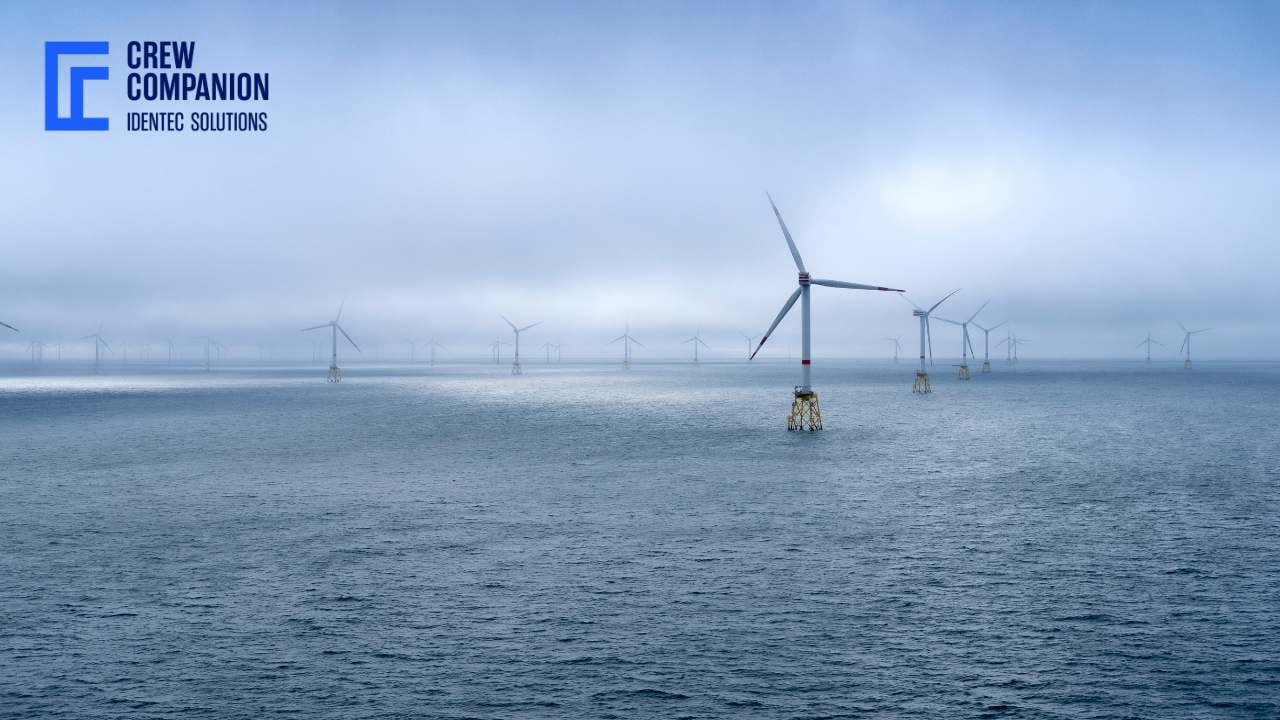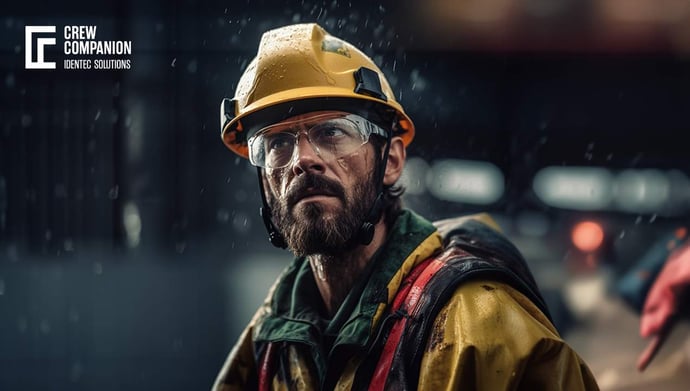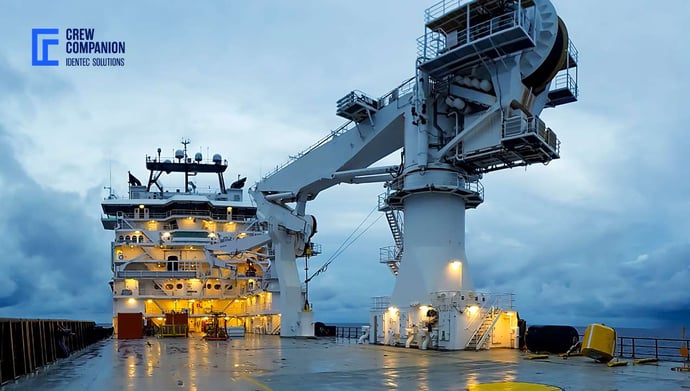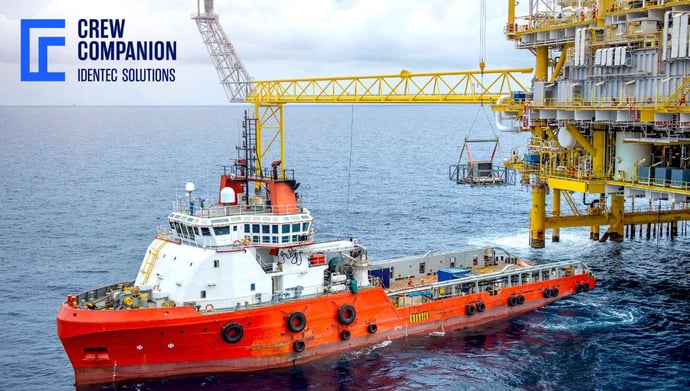Windfarm Maintenance: What makes offshore operations hazardous?
| Written by Michal Wozniakowski-Zehenter
In this post, you will find information and an overview of what risks are present in different stages of windfarm operations – from construction to maintenance and decommissioning. It will give you more insights into which areas to focus on while considering the safety aspect.
If it helps to prevent even the smallest incident, it is worth reading it and implementing it in your daily operations in the offshore wind farm. Interested? Then, let’s go.

No video selected
Select a video type in the sidebar.
Managing safety risks in the offshore wind park LIFE CYCLE
For years the global goal has been to reduce the usage of fossil fuels in favour of renewable energy, whether it’s solar energy, water plants, or windmills. Offshore wind parks are one of the most crucial and most hostile environments, yet extremely sufficient to produce energy. Right now, there are nearly 200 offshore windfarms located in different parts of the world, with China, the UK, Taiwan, Denmark, and the Netherlands as global leaders in this field, with Hornsea 2, located almost 90km off the Yorkshire Coast, comprised of 165 wind turbines and providing power to 1.4 million UK Households. It takes approximately 25-35 years for the life cycle of a turbine to end due to atmospheric conditions, huge pressure put on the materials, and the results of the saltness of the water.
From construction through operation and maintenance to decommissioning, scrutiny of planning and execution undergoes crucial health and safety risk assessment. In addition, workers and equipment are regularly brought to those remote turbines for installation or service.
So, what are the biggest concerns of keeping men safe during different periods of the turbine’s lifetime?
WINDFARM CONSTRUCTION
During this phase, a large number of personnel are usually on-site, carrying out multiple separate operations. It’s a lot of vessel manoeuvring and assembly of the assets simultaneously done in different areas. Heavy and bulky objects are lifted from the vessel to the structure of the turbine with common load sharing, which is often seen in those situations when components are being installed on a turbine, but still being held by the crane on the vessel.
Operating supervisors pay close attention to weather forecasts, with the most common being wind with strong gusts, tides, currents, and waves. Some operations might be done only during certain weather conditions, which might lead to additional pressure on the crew to manage all the tasks within a minimal timeframe.
Also, some subsea operations are executed in the build-up phase, leading to scrupulous and detailed planning of all movements and execution.

WINDFARM MAINTENANCE
Even though the number of risk scenarios is smaller than in the previous phase, there are still many situations where things might not go as planned. Here, we have a very reduced number of personnel working on each turbine, leading to remote and lone operations. In case of an emergency, bringing a rescue team to the turbine will cost valuable minutes, which can be crucial in life-threatening situations.
In addition, lifting long trailing cables may cause getting caught and entangled around different components and ladders, causing dangerous problems, including damaging the vessel or parts of the tower structure or a nacelle. Again, planning is crucial, considering cargo, transportation, weather, and human resources. Not having adequate size wind farm ships to transport the equipment or spare parts, having shortages in personnel, or rough weather conditions will put unnecessary risk on the operation (learn more about walk-to-work).
Reality shows that for years, the transport chain for lifting heavy components, which should be planned to the smallest detail, is usually interrupted already in the first stage of delivering goods to the turbine. Inaccurate estimations of crane length, spacial deficiency, and poorly balanced cargo with no suitable anchor points are forcing technicians to improvise and bend the rules to find a solution under the pressure of a ticking clock.
Luckily, the situation has improved over time, as people have realized that better planning can significantly increase safety and productivity.
In case of an incident, you should plan ahead for emergency mustering and rescue from the walk-to-work vessel or the wind turbine itself.
WINDFARM DECOMMISSIONING
It’s the process that starts together with building the turbine. It includes planning, disassembling, transportation, waste management, and post-decommissioning of turbines and other supporting structures. The goal is to return the site to its original condition. Again, as with the construction phase, we will have a large number of engineers, sub-contractors, technicians, boat operators, and divers. Making sure all of them can perform their duties in a safe environment is one of the priorities.
Disconnecting turbines and all cabling from the substation and removing all hydraulic fluids and other toxic substances from the nacelle is just the beginning. Falls from significant heights are the associated risk with those activities. Some parts might be already torn down and used, or just old, which can lead to flooding of some areas or compartments, which can lead to stability issues – quantity and the water weight might be unknown to estimate damages and influence on the structure. After unbolting and cutting the structure, it is lifted and loaded onto the transportation vessels (read more about wind farm boats). The number of ships differs depending on lift configuration.
Barges, floating cranes, barges, and heavy lift vessels are usually involved in the operation. What can go wrong here? Plenty of things, starting with movements of other watercraft, positioned close to each other as well as to the turbine. Exceeding the Safe Working Load capacities of cranes, faulty integrity of lifting points, and lack of the proper fastening of the cargo might lead to movements of components causing falls and influencing vessel stability and ballasting.
Suppose the planning of the number of vessels was inaccurate or the arrangement of the layout of cargo. In that case, the deck loading capacity might be exceeded, which can harm workers and equipment by falling over. Lack of proper tools and wrong maintenance might lead to delays in disassembly, which, considering the harsh weather conditions, might lead to extreme fatigue and human mistakes, slips, and falls as injuries.
Windfarm Maintenance: What Makes Offshore Operations Hazardous?
Another important consideration in offshore windfarm operations is the effect that environmental conditions have on both equipment and personnel. The offshore environment is known to be highly unpredictable, with sudden changes in weather that can change what had appeared to be a pretty calm day into one of hazards. Strong winds, heavy rainfall, fog, and low temperatures can all provide hazardous conditions that affect visibility, equipment functionality, and human endurance. The turbines installed in such harsh weather conditions would also suffer more wear and tear; this means they would need more regular maintenance checks, adding to the chances of unscheduled repairs. Further, these extreme conditions increase worker fatigue and stress, eventually leading to increased risks of human error during maintenance or repair operations. Protective measures of a specialized nature, such as offshore clothing, will need to be carefully selected so that they are able to put up with extreme conditions without inhibiting the flexibility and comfort of workers performing physical tasks. Monitoring weather forecasts and the use of predictive maintenance technology that identifies potential failures before they happen helps minimize the need for emergency interventions, reducing risks. Emergency responses are further complicated because the wind farms are very far from the coast, and workers cannot count on anything but helicopters or boats to take them to safety, making time management and communication between teams crucial. Offshore wind farm operators must continue investing in state-of-the-art weather monitoring systems, automated maintenance technologies, and comprehensive safety protocols that shrink the risks created by the volatile environment and enhance resilience overall. Mitigating the challenge to be derived from the ocean setting will not only protect personnel but will also ensure longevity for the turbines, reducing any possible downtimes and increasing energy production for a sustainable future.
FAQ’s
Is Windfarm maintenance dangerous?
Windfarm maintenance workers are exposed to hazardous conditions and big heights. Most common injuries include falls, burns from electrical shocks and fires, and crushing by heavy equipment parts.
How do you maintain a wind turbine?
Wind turbines require systematic maintenance two to three times a year. This number might increase with the ageing of the equipment. It includes turbine inspections and cleaning, lubrication of the moving parts, and repairs.
TAKEAWAY
Offshore windfarms are a key component of the renewable energy solution, and with rising demand to become less dependent on oil and coal, green solutions are preferable. In recent years, the industry has taken huge steps to overcome these challenges. With the experience comes optimization of the process. The design and structural integrity of turbines, new technologies and materials, and transportation and installation of large-size components are picked up to a higher quality level. That also involves safety issues, which are constantly being improved.
Using new technologies such as aerodynamic braking systems for the blades, fire detection and protection systems, life vests, and crew and vessel tag locators and readers are all helping to maintain a safer working environment for all involved parties. As we know, all phases of operations bring risks, but proper planning, monitoring, and evaluation of conditions together with good coordination and execution can and will bring results in safety and also improve the efficiency of your offshore windfarm maintenance operations.
Dive into one of our core topics: Personnel on board
Sources:
(1) https://safetyculture.com/topics/wind-turbine-maintenance/
Note: This article was updated on the 14th of October 2024

Author
Michal Wozniakowski-Zehenter, Marketing Manager
Michal Wozniakowski-Zehenter is an experienced marketing and project management professional. He spent most of his career on projects with a strong focus on digital marketing and event management. He is a very active voice representing offshore and mining industries through social media channels. Michal writes mainly about offshore oil and gas, renewable energy, mining and tunnelling. Compiling and sharing the knowledge within industries is one of his goals.





